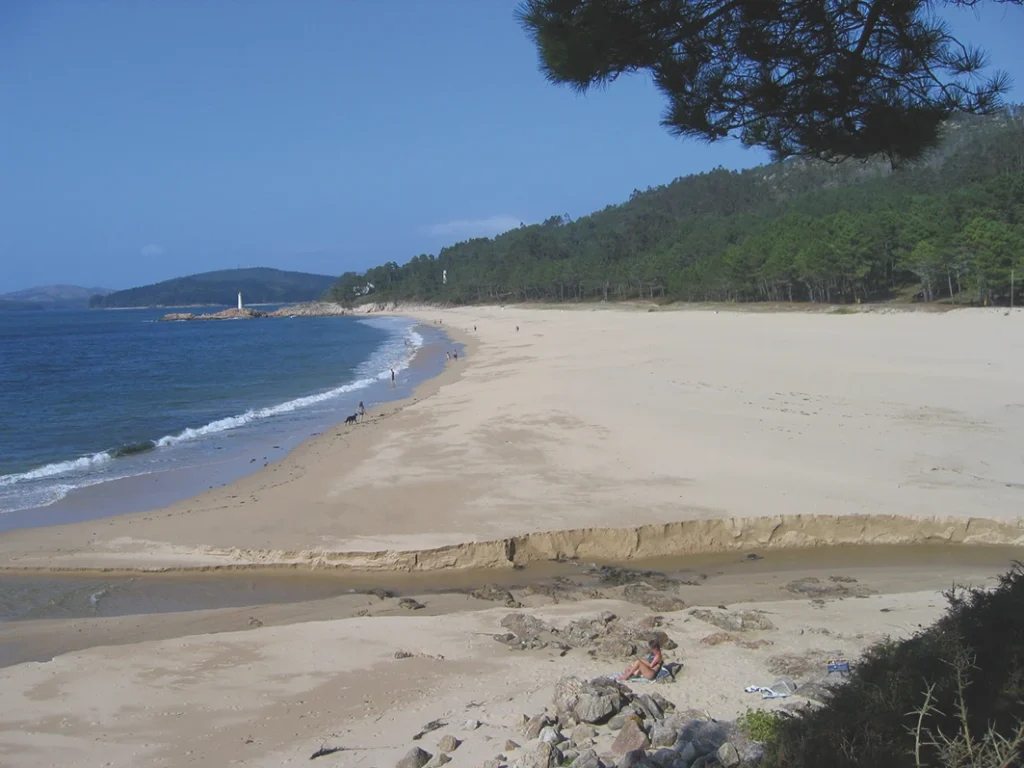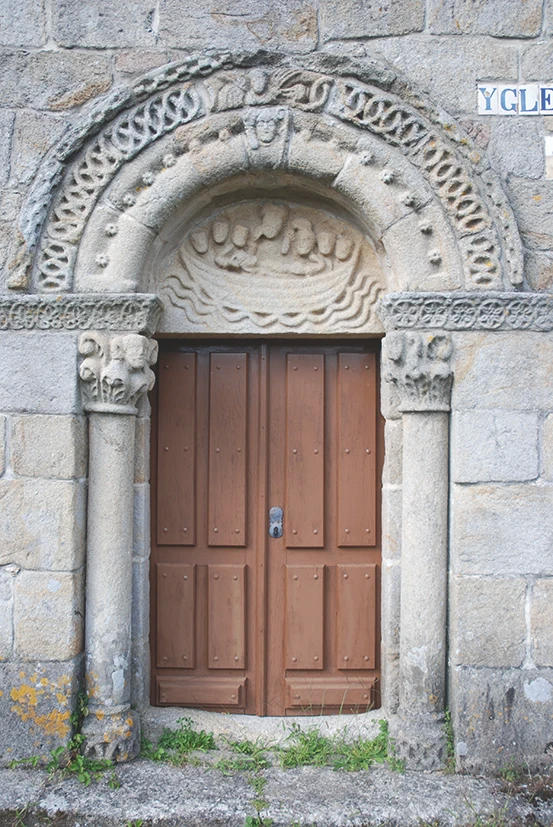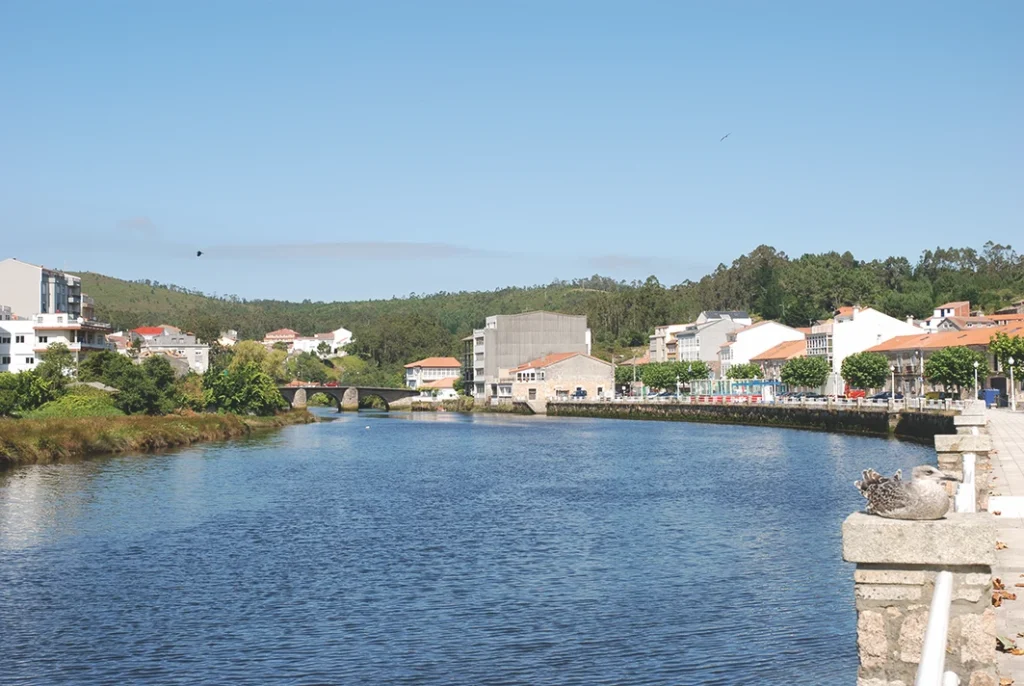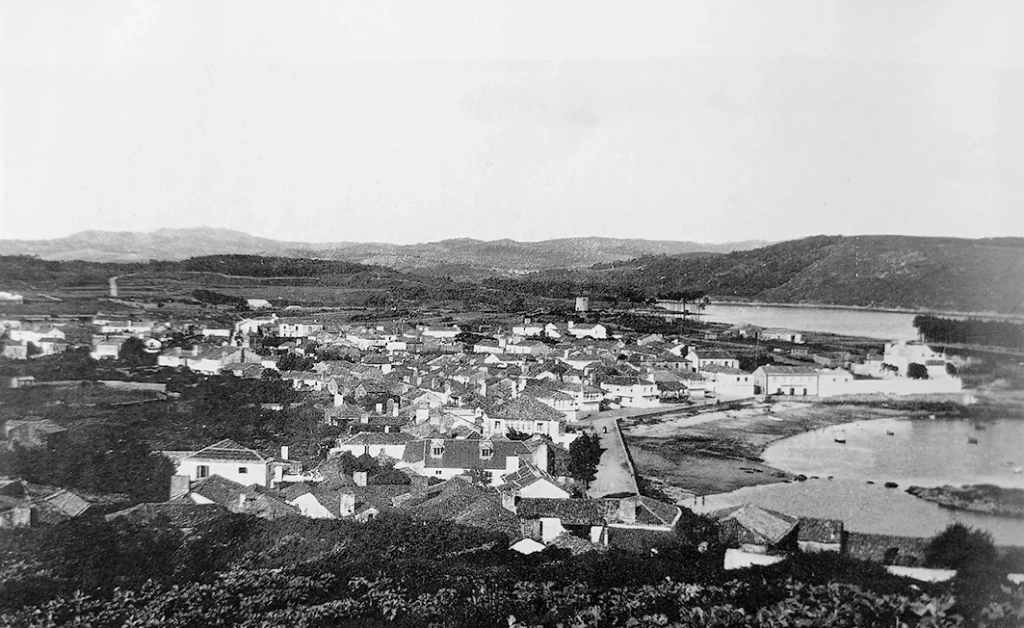The route starts in the town of Muxía: from here, take the AC-440 motorway to Berdoias. When you come to Os Muíños, turn left and continue along the coastal road. Go through the hamlet of Merexo, on the right, and the beach of O Lago, which together with the stream that flows into it and the surrounding pine groves make for a welcoming natural space in the ría. Then pass through Leis, a parish with a magnificent Romanesque church.
When you come to the crossing with the DP-1603, turn left towards Cereixo. This parish is in the municipality of Vimianzo, and is not only one of the most picturesque places in the area but also has a rich historical heritage with a parish church, towers and a tide mill.

The church of Santiago de Cereixo is just one example of the beautiful Romanesque churches to be found in rural Galicia. The nave and apse are both rectangular. You enter via a semicircular triumphal arch that rests on half columns with capitals decorated with plant motifs.
The exterior of the south door is a pure example of Romanesque art. The tympanum shows the transfer of the body of St James in a boat, accompanied by seven of these disciples. The image is valuable for being one of the very few representations of the Translatio, the voyage of the body of St James.

Higher up from the church are the towers of Cereixo, a manor house that looks like a medieval castle. The house was commissioned by the minor noble family of Calo y Carantoña, who later married into more powerful families such as the Castro Vilamarín and the Lanzós Novoa, who were counts of Maceda. The latter were major beneficiaries of the sanctuary of A Barca de Muxía. After many years of neglect, the building was restored and converted into a private residential property.
If you walk along the river bank, you’ll come to the mill dof Arcea or As Torres, the only tide mill still left in Costa da Morte and one of the few left in Galicia. The origins of the mill go back to 1647 when the lord of Cereixo, Juan Taboada Ribadeneira, granted rights to the brothers Andrés and Pedro Espasante to build a mill here in exchange for a yearly rent. After being rehabilitated and leased to different tenants, it was converted into a private residence.
After Cereixo, set off towards the town of Ponte do Porto, whose name comes from the old bridge that crossed the river and from the port that was established here. The town is divided into two by the river. The parish church, which is now on the left bank on the site of the old chapel of San Roque, was previously in the hamlet of A Grixa.
The town was established as a small trading centre because of the monthly fair held in the field of San Roque. It was an important centre of the lace work trade many years ago.
The district of Curros, which has a small ethnographic museum, is the starting point of the Os Muíños route (trail of the mills), which takes you along the last stretch of the river Porto.

This is a beautiful trail. On this part of the river, you can see the amazing landscape and the riverbank woodland, full of willow, ash, oak and bay trees. Along the way you’ll see several mills, which gives an idea of the importance of this type of building in the past.
When you reach the district of As Barrosas, you’ll come to a foot bridge over the river and return to the starting point of the trail, but if you want to continue with the tour, there’s another trail less than a kilometre further on that allows you to see some more of the area.

After Ponte do Porto, head towards the seafaring town of Camariñas about 9 km away, the town that gave the local craft of lace work its name.